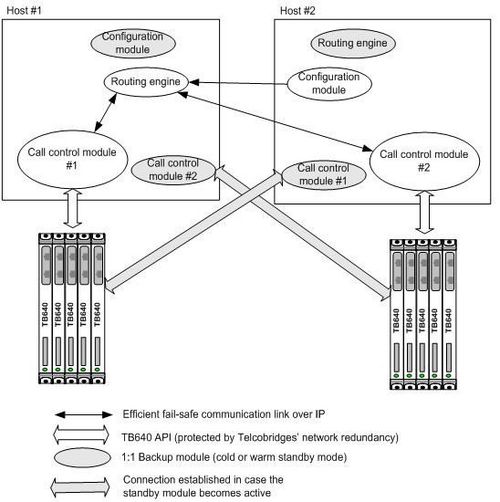ISUP:General guidelines to achieve highly redundant high-performance system (host failure)
From TBwiki
- Extending the previous guidelines, every module should have a backup module on another machine (refer to the figure below) in case an unexpected failure occurs (i.e., power failure on a host machine). The standby module should monitor the active module and decide to take over in case of failure.
- Depending on the system requirements, the architect may want to use host machine capable to handle twice the normal load if no performance hit is required in case of failures.
- Inter-module communication through IP must be made fail-safe as well to avoid dealing with link failure or message re-ordering within the functional modules.
- Call control module redundancy is mostly implemented by the TB640 API architecture since it is always possible to recover the configuration and/or state of all resources and calls present on a Tmedia device at any moment. Thus, the standby call control application only has to query the different TB640 blades and reconstruct its internal data structure based on this information.
- Communication links between hosts and the TB640 blades are protected by the TelcoBridges’ network redundancy (i.e., link disconnection, switch failures, bad cables, etc.) and thus only require the proper system configuration (i.e. having two Ethernet switches and two Ethernet line cards on each host machine).
